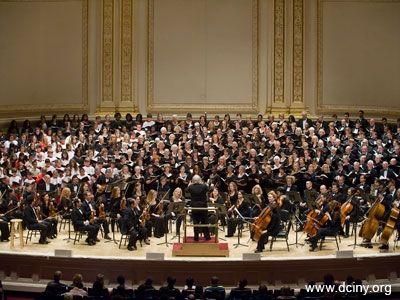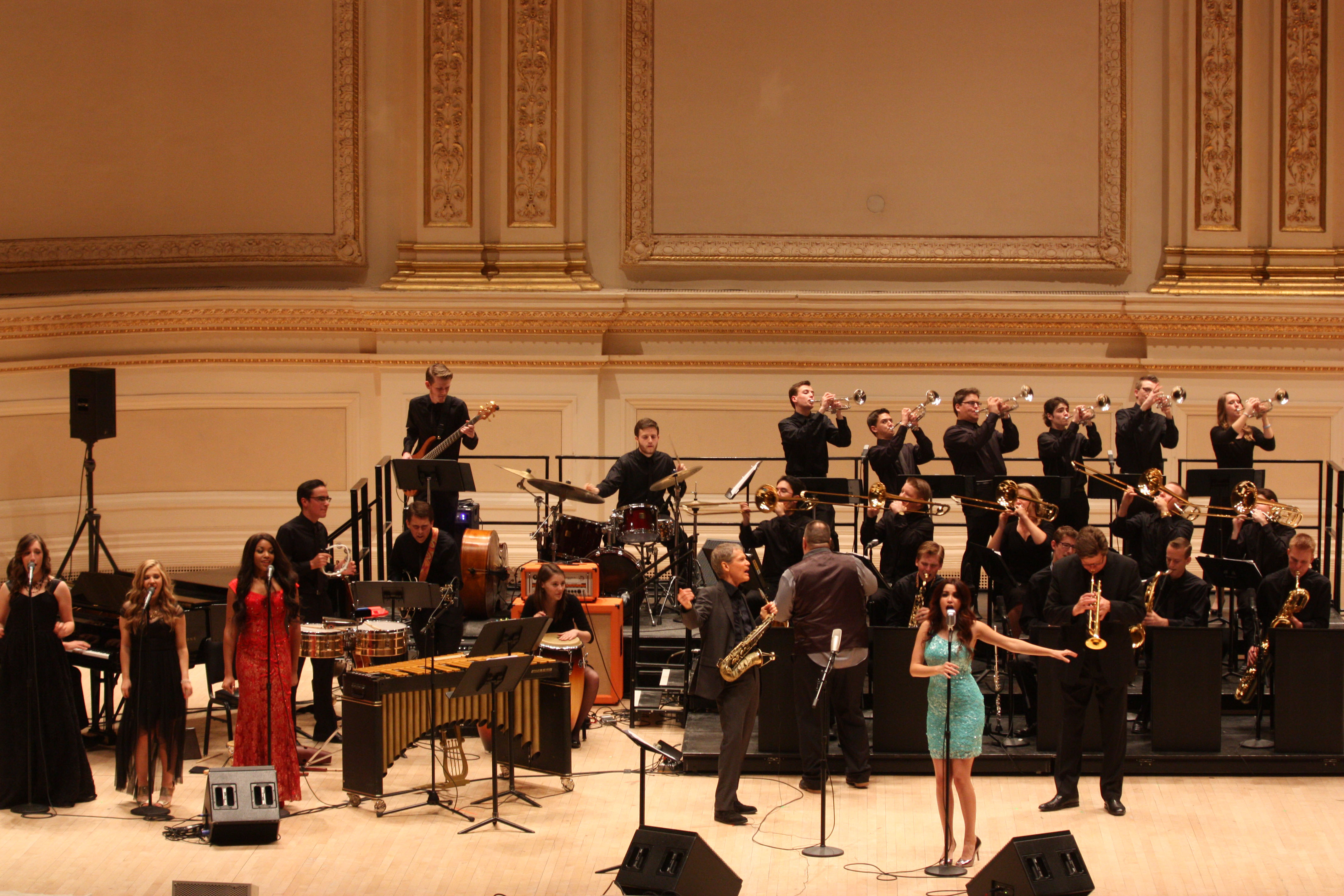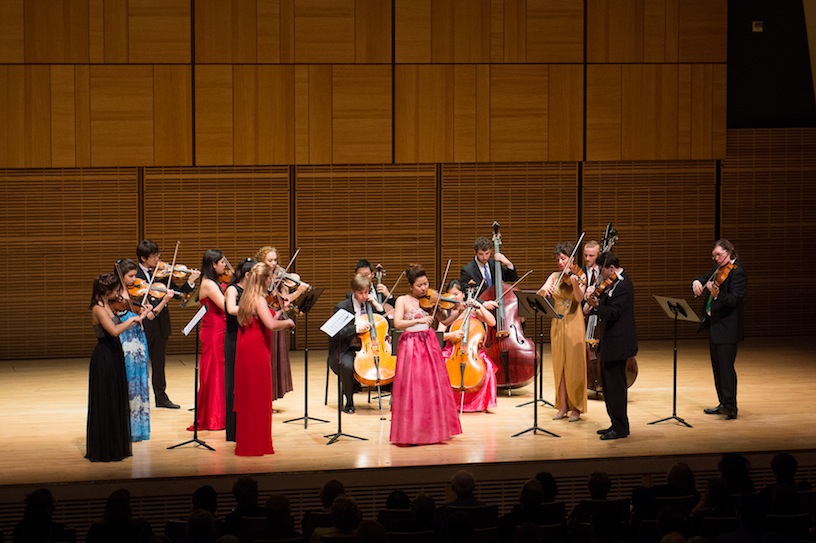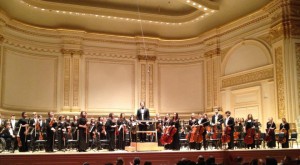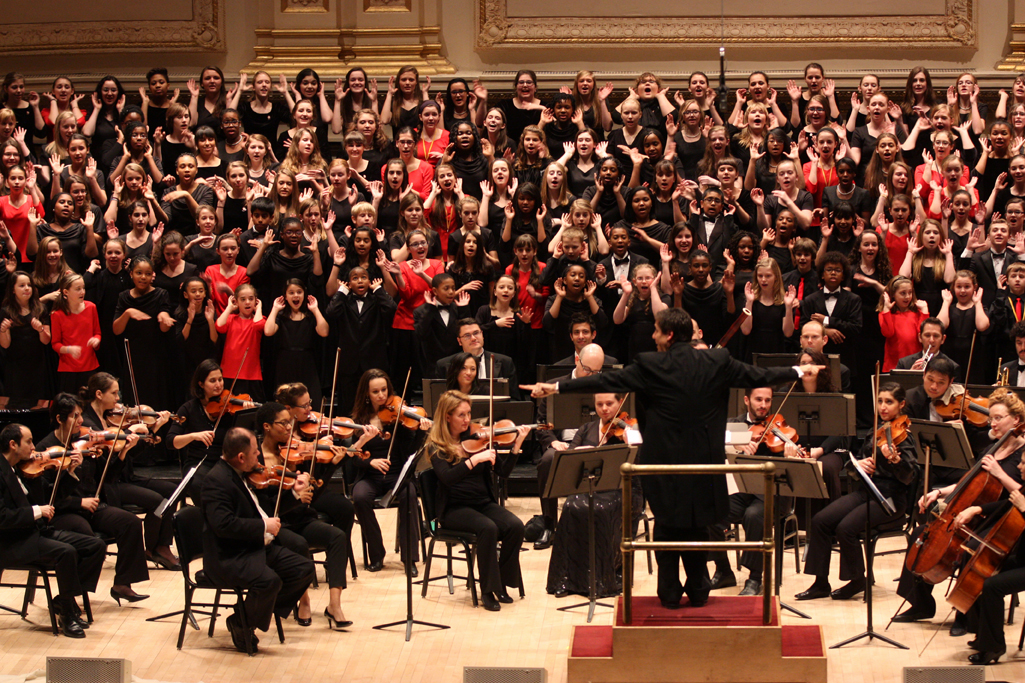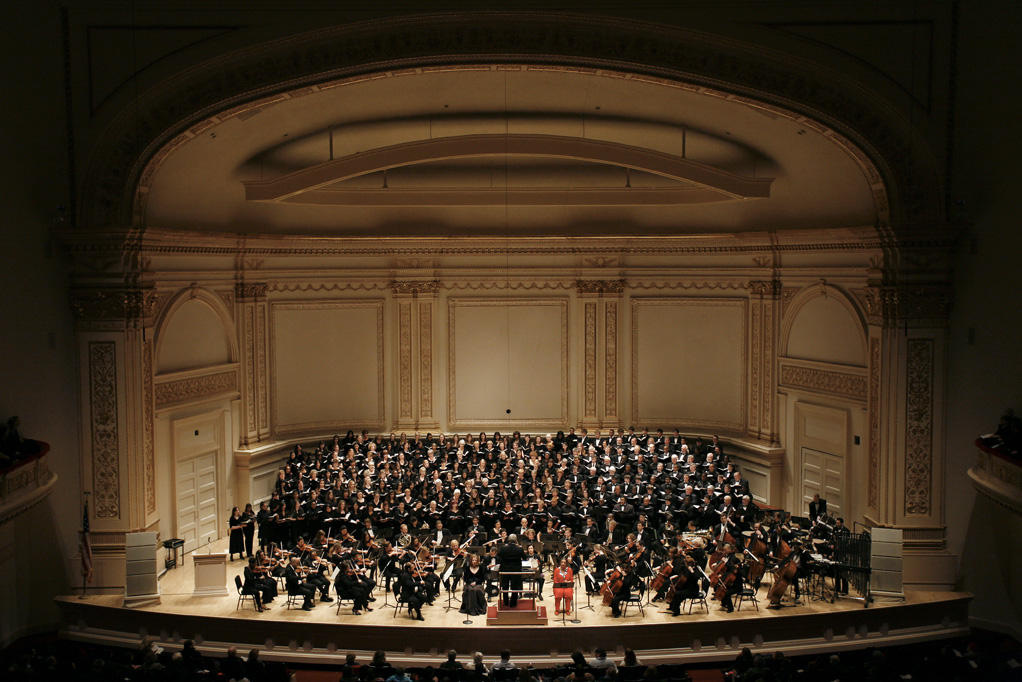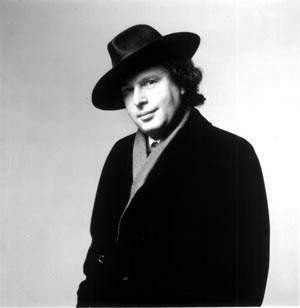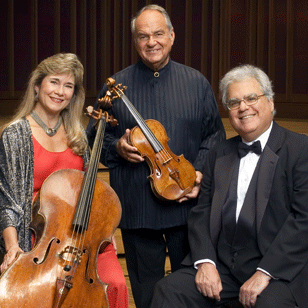In what has become a tradition on the celebration of Martin Luther King, Jr. Day, Distinguished Concerts International New York (DCINY) presented a concert featuring the music of Karl Jenkins. This year’s event had the added dimension of being a 70th birthday celebration for the Welsh composer. Arguably one of the most popular living composers and indisputably one of the most frequently performed, Karl Jenkins and DCINY have a special relationship. DCINY has given countless premieres of his newest compositions and continues to give top-notch performances of his works to enormous public response. As one watched the singers fill the back of the stage, overflowing onto the right wing, one could not help sharing in the eager anticipation. The program included The Bards of Wales (United States Premiere), the Benedictus from The Armed Man: A Mass for Peace, and the Stabat Mater. With performers from California, Georgia, Minnesota, North Carolina, Argentina, Canada, France, Hungary, New Zealand, The Netherlands, and “individuals from around the globe” (the program listing 579 singers!), the stage was set for what was to be a spectacular evening.
The concert opened with the cantata, The Bards of Wales. What could be more natural for a Welsh composer than to use as a text than a poem entitled “The Bards of Wales”? Interestingly enough, this poem was not written by a Welshman, but by the Hungarian poet Janós Arany (1817-1882). Asked to write a poem of praise for the occasion of a visit to Budapest by Emperor Franz Joseph (only eight years after the Hapsburg empire crushed Hungary’s War of Independence), Arany chose to compose a ballad based on the ancient Welsh legend of how King Edward I of England had 500 Welsh bards executed for failing to sing his praises at a banquet in 1277. The message was unmistakable: the truth must be told, at whatever sacrifice. The Bards of Wales is a nine-movement work scored for orchestra, chorus, and tenor, baritone, bass-baritone, and mezzo-soprano soloists that can be sung in Hungarian, Welsh, or English. On this occasion, the English version, as translated by Peter Zollman (1931-2013), was used. Tenor Rhys Meirion was cast as King Edward I. Baritone Darik Knutsen had a double role as a minstrel and bard, while bass-baritone Samuel Smith and mezzo-soprano Charlotte Daw Paulsen also took roles as bards.
What strikes the experienced Jenkins listener as singular about The Bards of Wales is the complete absence of any of the multi-ethnic influences that Karl Jenkins is so well known for using in his works (answering any naysayers who carp about so-called multicultural “gimmicks” for effect). The sound is uniquely his own, and I would easily know this is a Jenkins work without being told. That is not to say that there is anything formulaic in it, as only fragments resembled earlier compositions (the movement “His Men went forth” resembling a hybrid of material from L’homme Armé or Charge! movements of The Armed Man).
Rhys Meirion sang and acted his role with gusto in a performance that bespoke the haughty arrogance of Edward, his vanity, cruelty, and in the end, his torment. He definitely has charisma in spades! Not to be overlooked, Darik Knutsen, Samuel Smith, and Charlotte Daw Paulsen projected the brave stand of the bards with great skill, the defiant tone coming to the fore with strength and dignity. Conductor Jonathan Griffith led the huge forces with his customary skill. The Bards of Wales is filled with dramatic effect, from the cannon shots of the first movement to the martyrdom of the fallen bards in the last. This is a work I very much wish to hear again, and I am hoping it will be recorded (in English, that is – there is already a recording in Hungarian on CMI Records). Are you listening, Deutsche Grammophon? I will be the first to buy it!
After the last notes were sounded, the audience leapt to their feet in appreciation. Mr. Jenkins came to the front of the stage to accept the standing ovation. After the applause died away, he took to the podium to conduct the Benedictus from his work The Armed Man: A Mass for Peace. The seven-and-a-half minute twelfth movement of The Armed Man, the Benedictus is often played as a stand-alone piece and has been arranged for numerous combinations of instruments (notably a version with the brilliant euphonium player David Childs). Here it was given in its original form with orchestra and chorus. The Benedictus is a beatific work, extremely moving in its simplicity. One holds one’s breath as an ethereal cello solo floats over hushed orchestral accompaniment before the chorus seamlessly enters, leading to an ecstatic explosion of percussion to the words Hosanna in excelsis – a supremely moving inspiration. I wish I knew the name of the solo cellist; her playing was quite beautiful and she deserves mention. Mr. Jenkins is an able conductor and his understated approach was perfect. It was a magical end to the first half.
After intermission, Mr. Jenkins was brought to the stage before the performance of the Stabat Mater. A letter of congratulations and birthday greetings from New York City mayor Bill de Blasio was read. Jonathan Griffith led the audience in singing “Happy Birthday” (for the purists, Jenkins’ actual birthday is February 17). A jumbo-sized card that was signed by hundreds of people was presented to Mr. Jenkins. A bashful-looking Jenkins nodded his thanks to all before leaving the stage.
Maestro Griffith then took to the podium to conduct the Stabat Mater. I have something of a special relationship with this work. I was in attendance when DCINY gave the US Premiere on January 19, 2009 at Avery Fisher Hall. I confess that I was initially reluctant to attend, as my impression of Karl Jenkins and his music was based solely on a DeBeers diamond advertising campaign that I absolutely despised! After hearing the Stabat Mater, I realized how shortsighted and wrong that preconception was. I was moved in a way that I have rarely experienced on the first hearing of a musical work. I went from skeptic to believer in the space of the twelve movements of this piece and rushed out the next day to purchase the recording. My musical life was changed, as I became a great admirer of Karl Jenkins and his works. It has been a mounting source of irritation to me that snobbish musical circles often look askance at a composer because he is “popular” and his work is “tonal”. It is not a zero-sum proposition: one can love the music of Karl Jenkins and still love the most ultra-modern works without having to apologize for either.
Now, back to the Stabat Mater. This twelve-movement work uses the text of the 13th century poem Stabat Mater Dolorosa for six of the movements. The other movements uses material from the Epic of Gilgamesh, lines from the 13th century Persian poet, Rumi, and original materials in a variety of languages, including English, Arabic, Hebrew, Greek, Aramaic, and of course Latin. Scored for orchestra, including Middle Eastern percussion, chorus, mezzo-soprano and “ethnic vocals” soloists, this hour-long work is a powerful and profound piece that still continues to move me, even after countless hearings.
Mezzo-soprano Charlotte Daw Paulsen was radiant in the achingly beautiful Lament and the despairing Are you lost out in darkness? Special mention must be made of the incredible Belinda Sykes. Her playing of the double-reed mey and her amazing passion-filled vocals floored me in 2009 (especially in the Incantations and Are you lost out in darkness? movements), and they did so again in 2014. I simply cannot imagine any other performer in her role in this work! Highlights are too numerous to list individually, but I will mention the Cantus lacrimosus, Sancta Mater, and And the Mother did weep as personal favorites for the night.
The final movement, the Paradisi Gloria, starts as a smoldering flame that bursts into a full-blown inferno, bringing this work to a close. I was slightly disappointed that there were no chorus members in the balcony as there were in 2009, but nonetheless it was a powerful conclusion to a first-rate performance. Maestro Griffith is simply masterful at how he handles such gargantuan forces with such apparent ease. The Distinguished Concerts Orchestra and the Distinguished Concerts Singers International must be congratulated for their excellent work as well. The thunderous ovation was every bit deserved.
Pen-blwydd Hapus, Karl Jenkins! May your next seventy years be filled with good health so you can continue to write more wonderful music for the world to enjoy!

